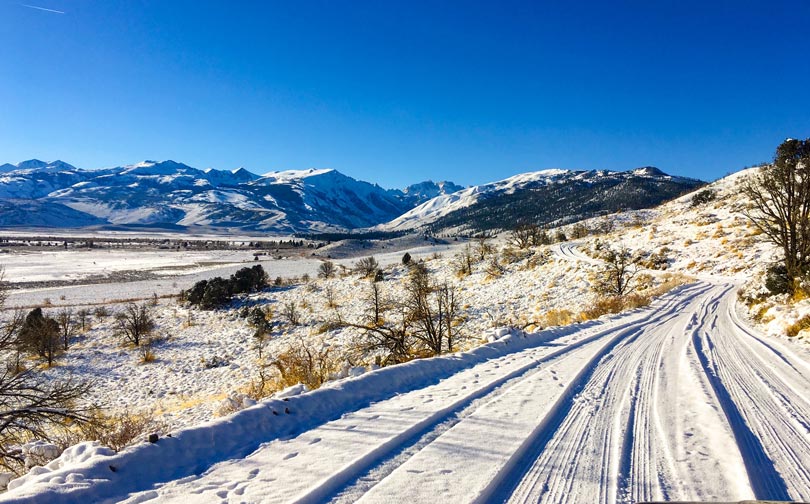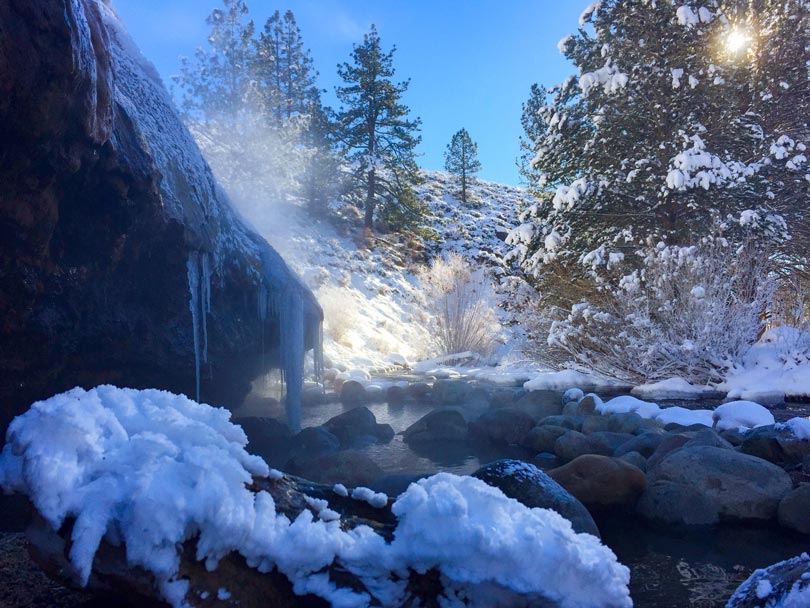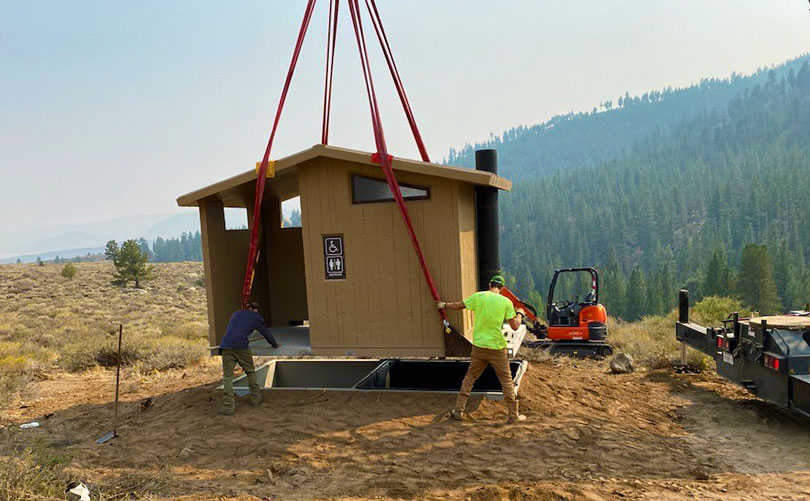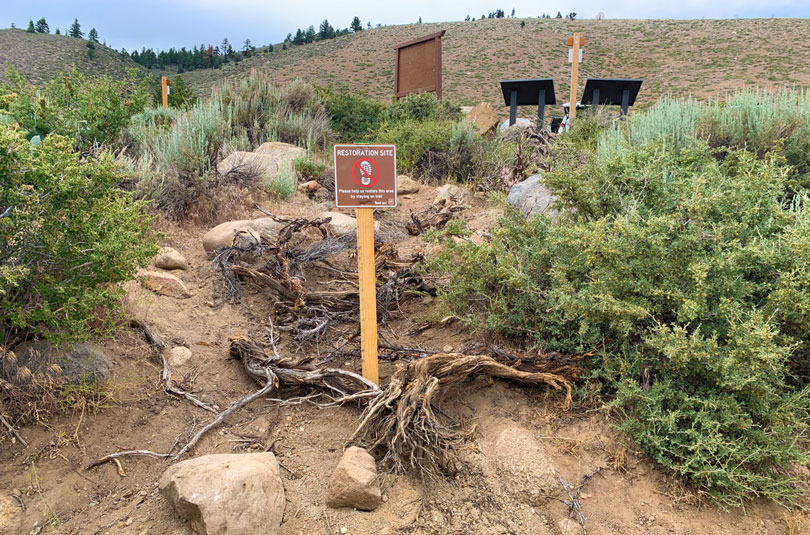
John Muir famously said, “the mountains are calling and I must go.” So, he did, and hundreds of thousands of people follow that same call to the remote and scenic eastern side of California’s Sierra Nevada each year. The region is home to world-class skiing and hiking along with many natural wonders, including internationally famous hot springs.
Having heeded the call of the mountains, until recently visitors to Buckeye Hot Springs found themselves in a pinch when nature called as well. In ecologically sensitive and heavily visited areas, like Buckeye Hot Springs, this can lead to damaging, unsightly, and frankly putrid results.
Fortunately, the 2022 addition of several basic, but critical, upgrades, such as a vault toilet, has changed all that.
Trail, parking, & bathroom protects Buckeye Hot Springs, local economy
“The main goals were to protect natural resources and improve the recreation value of Buckeye Hot Springs,” said Kim Anaclerio, program director at Mammoth Lakes Recreation, the nonprofit organization that spearheaded the work. “Public lands visitation is the primary economic driver of the region and ensuring these resources remain accessible to the public and are properly protected and cared for, is critical to that success.”
Despite being located 10 miles from the isolated town of Bridgeport in the Humboldt-Toiyabe National Forest, Buckeye Hot Springs has always been a popular place to visit. The growth of the outdoor recreation industry in recent years, particularly when it comes to visiting natural thermal pools throughout California, has only made places like Buckeye Hot Springs even more beloved.

“These geothermal oddities provide unique opportunities for recreation and rejuvenation, but, quite frankly, they are being loved to death,” said Anaclerio. “The Buckeye and Robinson creek drainages have grown drastically in popularity among the dispersed camping and ‘van life’ community, which has contributed to human and pet waste issues, illegal campfires, and creation of new camp sites — a huge problem that was exacerbated by the COVID-19 pandemic.”
Eastern Sierra partners step up to help Buckeye Hot Springs
With no restroom or designated parking lot, and a slew of random trails leading down to the hot springs and Buckeye Creek, Mammoth Lakes Recreation, along with a robust group of partners, decided in 2020 that it was time to take action.
Working alongside several members of the Eastern Sierra Sustainability Recreation Partnership, a consortium of agencies focused on projects and activities that improve public services, infrastructure, and natural resources in the eastern Sierra Nevada, the nonprofit used a grant for just under $80,000 from the Sierra Nevada Conservancy to fund the Buckeye Hot Springs Recreation Enhancement and Watershed Restoration project.

“Informal and unmanaged use had led to the formation of multiple user-created trails and parking spots, which was causing significant erosion issues and harming the water quality of Buckeye Creek and the surrounding landscape,” Anaclerio said. “This project funded the construction of a restroom to eliminate human waste issues and created a formal parking area to reduce erosion and deter additional loss of habitat.”
The project, which wrapped up in October of 2022, also created one trail using native materials to improve access and deter the formation of other user-created trails, and put in interpretive signing to educate users on the native flora, fauna, geology, and natural significance of the area. With the help of the Bridgeport Indian Colony, the signage also highlights the cultural importance of Buckeye Hot Springs and reminds visitors to be good stewards of the land.

Project also supports local economy and state’s Outdoor Access-For-All goal
Ultimately, the upgrades at Buckeye Hot Springs are intended to reduce impacts to an important natural resource that has become an important driver of the local economy and improve the experience for everyone. This is particularly true for people who may not be familiar with low-impact recreation principles like “leave no trace,” and those from communities with less access to social networks, information, and equipment that can make navigating a remote area with limited services fun rather than downright unpleasant.
“This area contributes significantly to the economic viability of the Bridgeport region and this project helped to improve recreational access while protecting resources for future generations. It really is challenging to develop outcomes that support both economic and ecologic values, and this project was successful in sustainably improving existing public access while also protecting the naturally immersive experience,” Anaclerio concluded.
With the project successfully completed, and the partners in place to help with long-term management, the hope is Buckeye Hot Springs will continue to be loved, but no longer loved to death.
